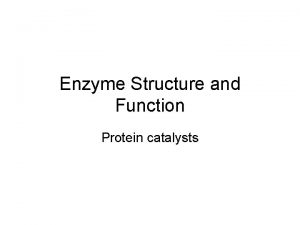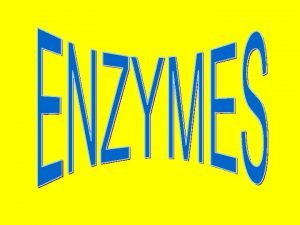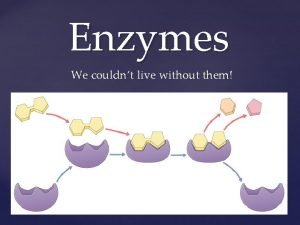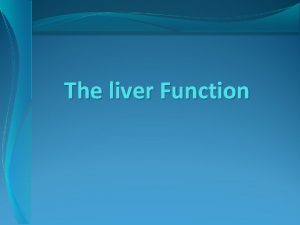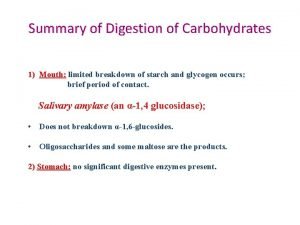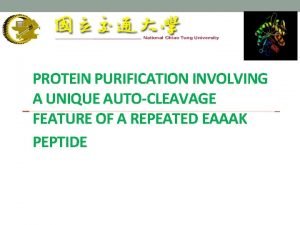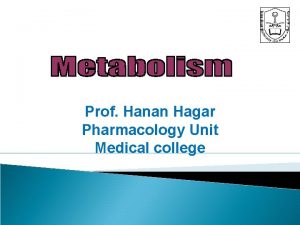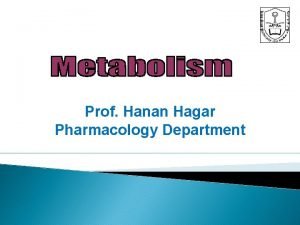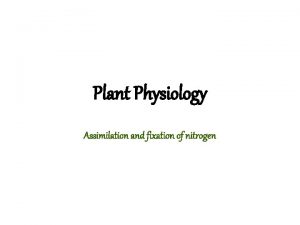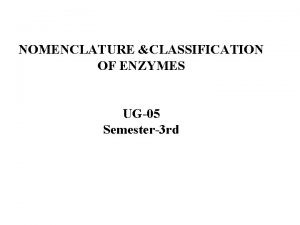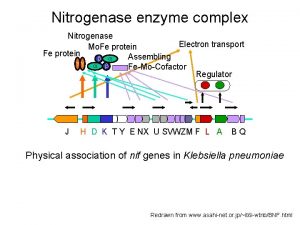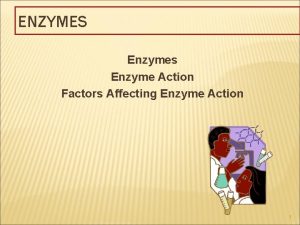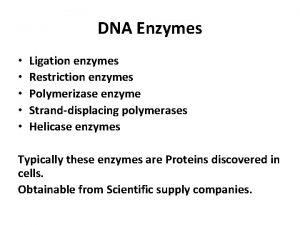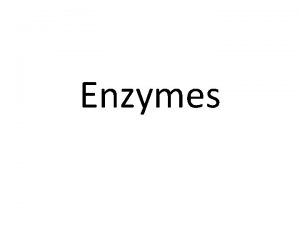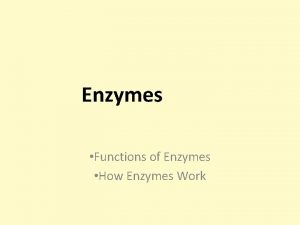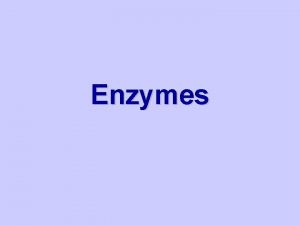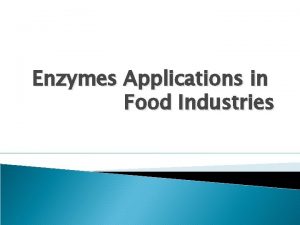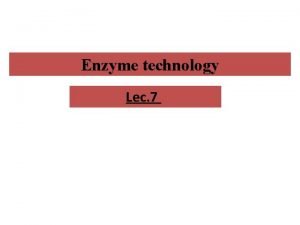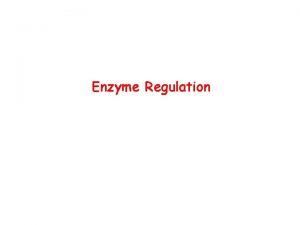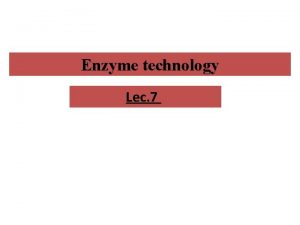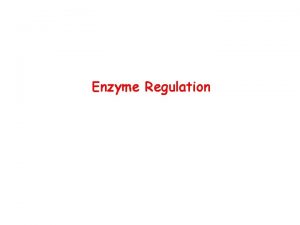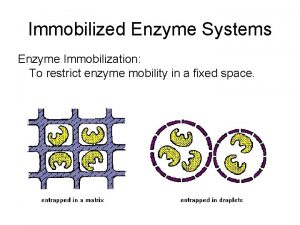ENZYMES ENZYME STRUCTURE ENZYME n n n Enzymes














- Slides: 14

ENZYMES

ENZYME STRUCTURE

ENZYME n n n Enzymes are proteins that speed up chemical reactions. (catalyst) Enzymes do not change when they perform their function, and can be used over & over again. http: //highered. mcgrawhill. com/sites/0072495855/student_view 0/chapter 2/a nimation__how_enzymes_work. html The shape of an enzyme determines its function Their structure can be changed due to environmental factors and made irreversably inactive (denatured).

ACTIVATION ENERGY n n n Enzymes lower activation energy. (the energy required to make a chemical reaction occur). http: //www. sumanasinc. com/webcontent/animations/ content/enzymes. html Exergonic reactions- these release energy Endergonic reactions- these require energy Energy coupling- the use of an exergonic process to drive an endergonic reaction. Eg: breaking down of ATP to power building reactions

THEORIES Lock and Key- One specific enzyme fits into one specific substrate. n Induced fit- the enzyme alters shape as the substrate binds to its active site so it fits the active site more firmly. https: //gcps. desire 2 learn. com/d 2 l/lor/viewer/view. File. d 2 lfile/15524/8489/800 px. Induced. Fit_Enzyme_Catalyst. png n

ENZYME n n n Enzymes are very specific, they can only help one reaction. http: //lpscience. fatcow. com/jwanamaker/anima tions/Enzyme%20 activity. html Some enzymes can be used repeatedly on the same set of molecules to build long chains.

FACTORS AFFECTING ENZYMES n n Certain enzymes work in a specific p. H. If the p. H is too high or too low, the enzyme may become denatured (which is irreversable).

FACTORS Cont… n Enzymes work in specific temperatures. As temperature increases, enzyme activity increases unless it is too high, then it becomes denatured (irreversible). If the temperature is too low, the enzyme becomes inactive (which is reversible).

FACTORS Cont… n n Adding more substrate will increase the rate of reaction initially, until eventually all active sites of all the enzymes are full. Increasing the amounts of enzymes will increase the reaction rate as more active sites become available.

COENZYMES & COFACTORS n These are not proteins. It is a coenzyme (eg. Vitamins) if it is an organic molecule and a cofactor if it is inorganic. This allows a reaction to take place. They maybe bound tightly to the active site permanently or bond loosely along with the substrate.

Enzyme Inhibitors n n n Some chemicals inhibit the action of specific enzymes and is usually irreversible. Noncompetitive inhibitors- these do not compete directly with the active site. They impede enzymatic reactions by binding to another part of the enzyme. This will cause the enzyme to change shape and less active. http: //bio. winona. edu/berg/ANIMTNS/n-cinan. htm

Enzyme Inhibitors cont… n n competitive Inhibitors- these chemicals reduce the productivity of enzymes by blocking the substrate from entering the active site. https: //www. youtube. com/watch? v=GLF 3 yws K 04 M

Allosteric Regulation n Some regulatory molecules behave like reversible noncompetitive inhibitors. These molecules bind to an allosteric site (a site on the enzyme that is not the active site), which may either inhibit or stimulate the enzymes activity. http: //www. stolaf. edu/people/giannini/flashanimat/en zymes/allosteric. swf http: //content. bfwpub. com/webroot_pubcontent/Cont ent/BCS_4/Hillis 1 e/Animated%20 Tutorials/at 0303/p ol_0303. swf

Feedback Inhibition n n When metabolic pathways are switched off by an end-product. http: //highered. mheducation. com/sites/007294 3696/student_view 0/chapter 2/animation__feed back_inhibition_of_biochemical_pathways. ht ml
